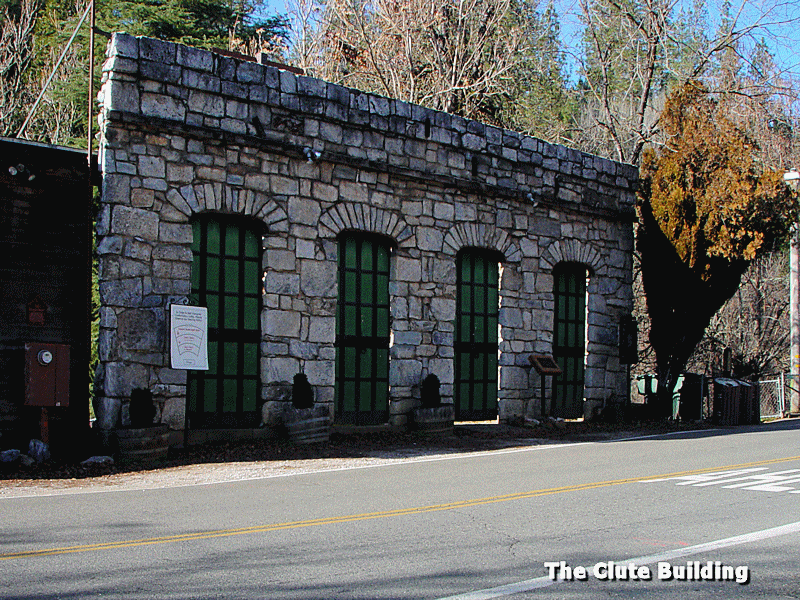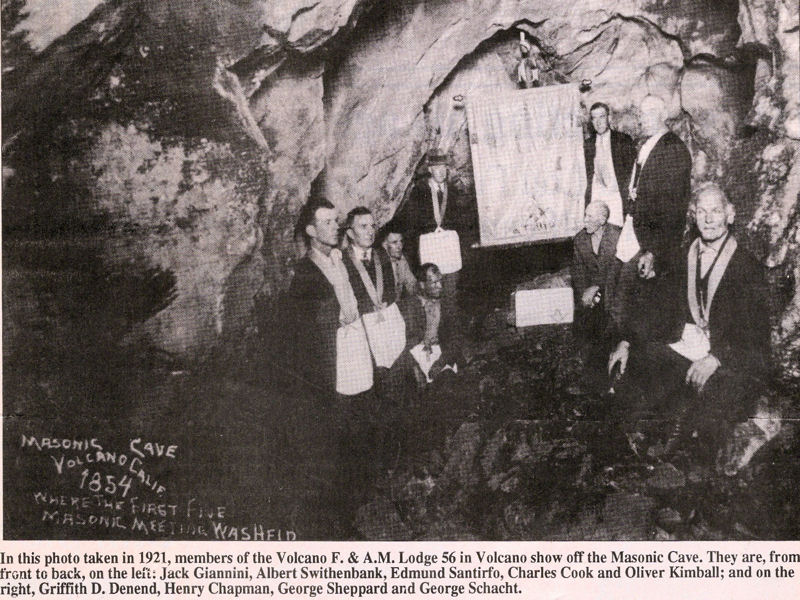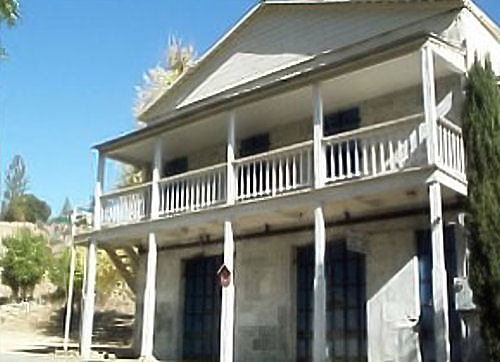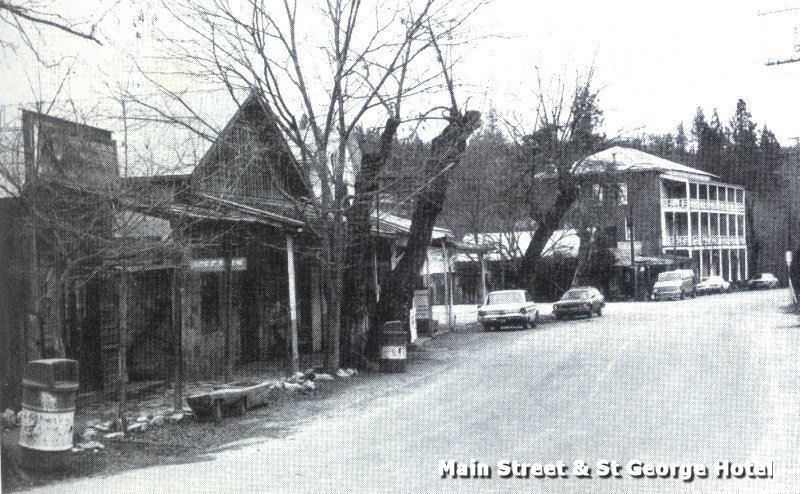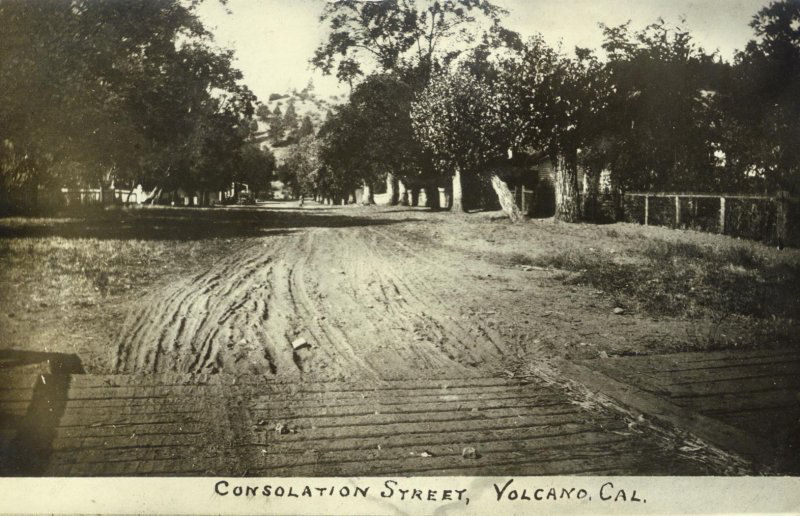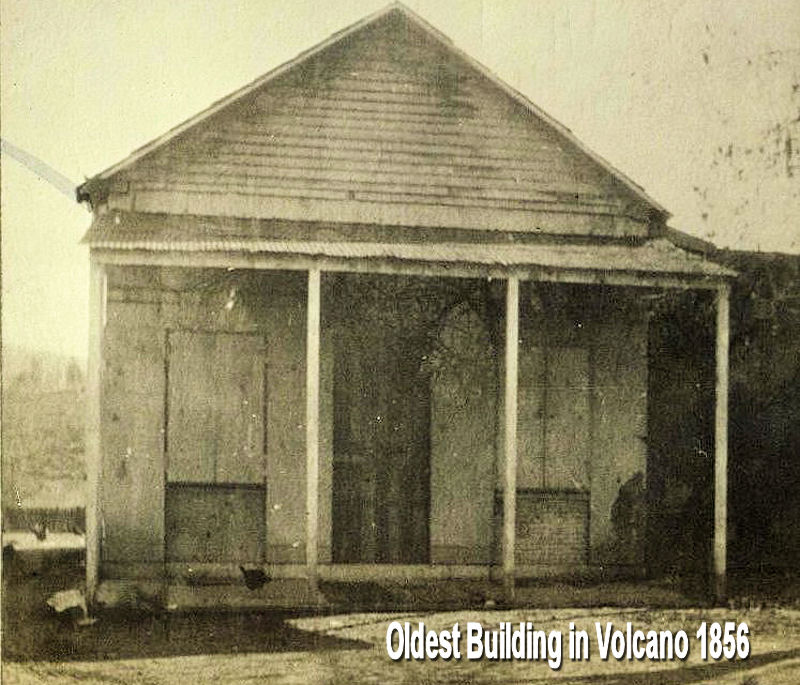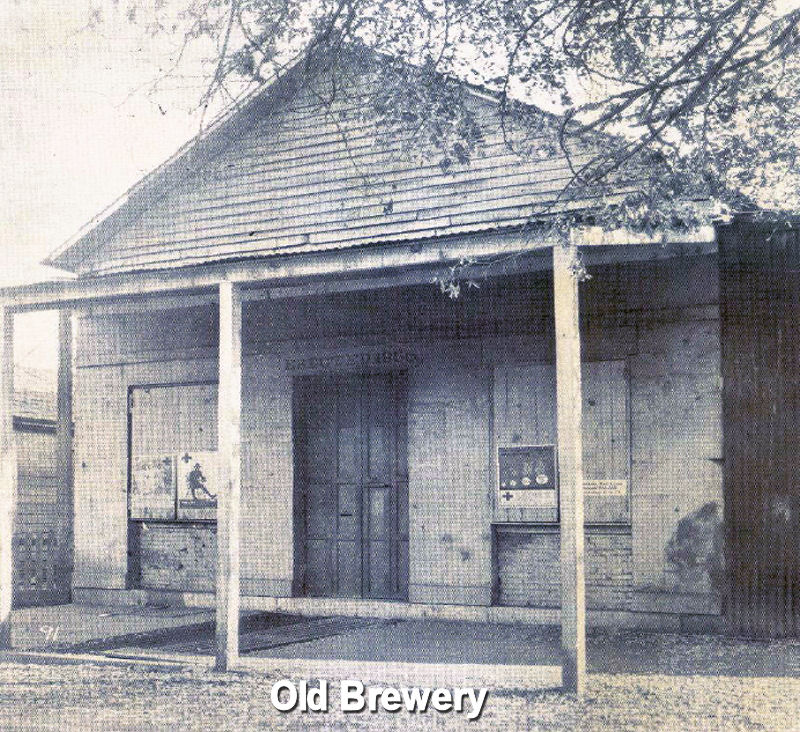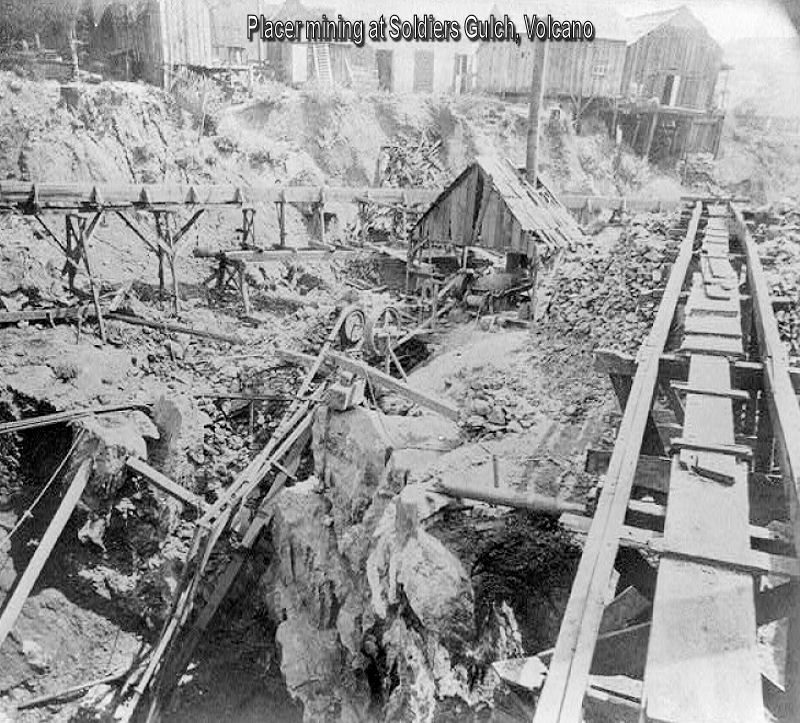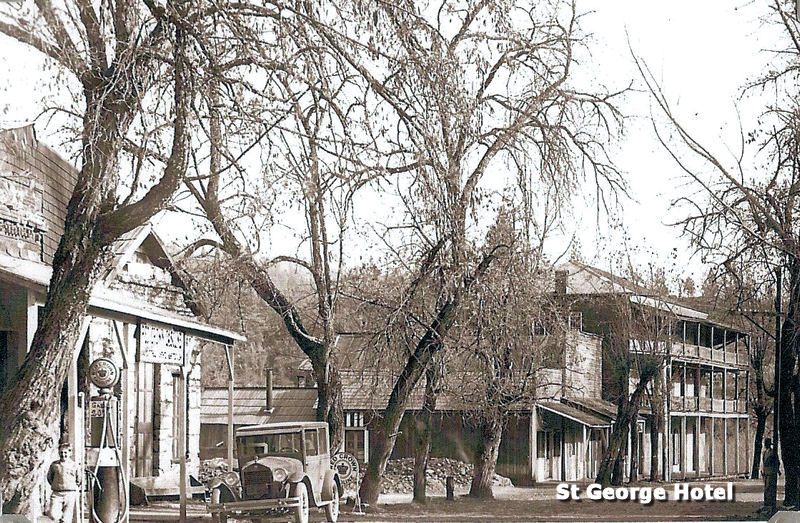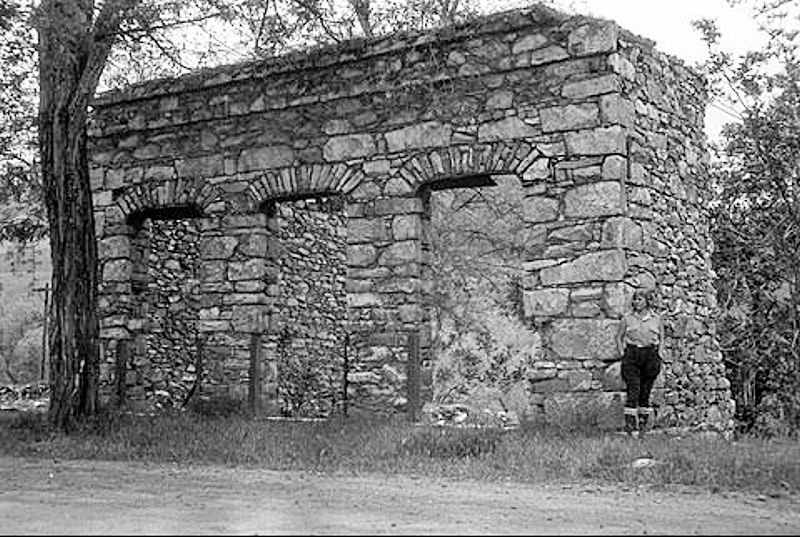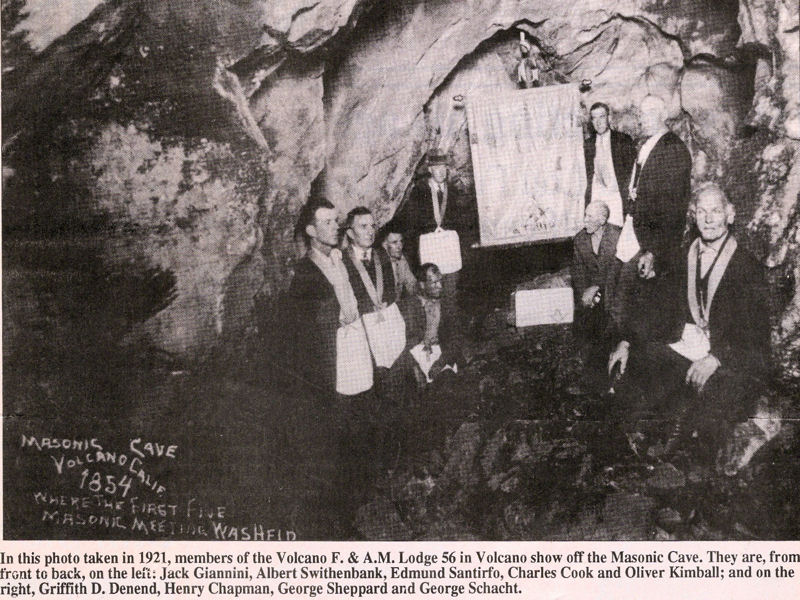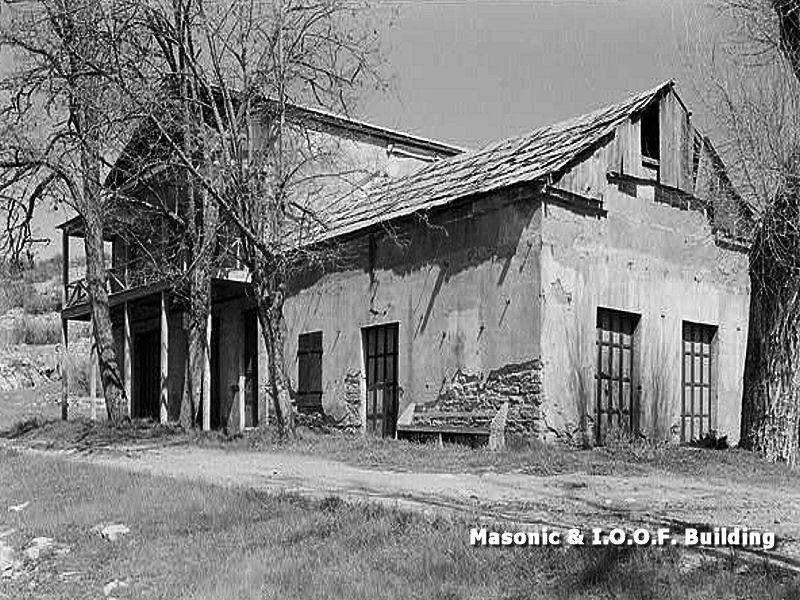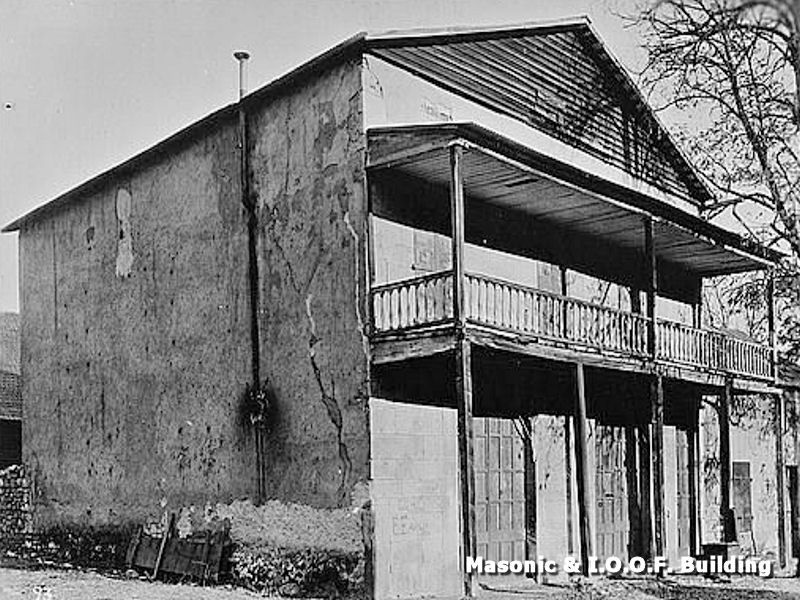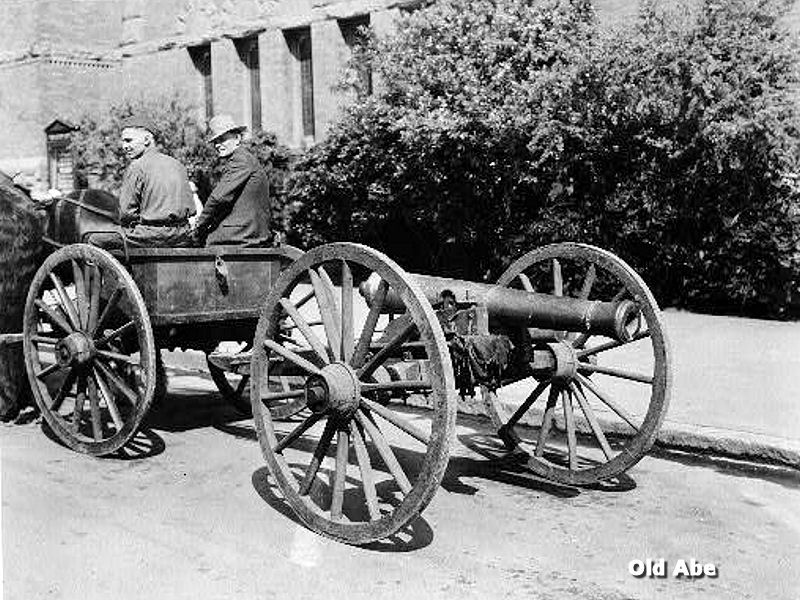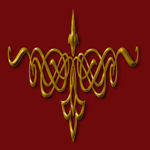





|
|
|
VOLCANO AREA TOURS
|
|
|
Volcano, California | ||||||||||||||||||
The surface gravels paid handsomely, and to the miners' surprise, the claims seemed to get richer the deeper they went. Men picked out large nuggets with only their fingers as tools; the diggings were easy. Until they hit a layer of disquieting yellow clay. Sure, there was gold in the clay, but it was almost impossible to get out. Discouraged, several claims were abandoned which later turned out to be worth fortunes when methods of separating the gold from the clay were discovered. Boiling was found to disintegrate the clay, so boilers were built to steam out the gold. Another method was to let the clay dry in the sun, afterwhich it was an easy matter to pound it to dust and extract the gold. One miner is reported to have taken out $8,000 in only a few days, another took out twenty-eight pounds from a single pocket. With returns like these, it's easy to see how the region produced the $90 million credited to this area. |
|
|||||||||||||||||
The Clute Building was also built in 1855 by the brothers Frye. John, George, and Reuben Frye arrived in Volcano during the early 1850's, and by 1855 had done quite well for themselves. Their income came from mining, and selling water from their ditch to the miners working the placers in Soldiers Gulch. They also speculated in real estate, owning several pieces of property on Main Street, upon which they erected buildings to meet the growing demand for stores. Standing on the west side of Main Street, with Soldiers Gulch behind, this building was constructed on two lots, each twenty feet wide by sixty feet deep. From the outside, the building appeared to be a single store; actually it was two, divided down the middle by a common wall. When the building was finished, the brothers sold the north lot and north half of the building on it to E. M. Strange in November of 1855. Four days later, they sold the south lot and south half of the building to John LaRoy and James A. Robbins. LaRoy and Robbins sold out the following year to Charles Crocker (later one of the Big Four), who sold it to Franklin W. Clute in August of that same year. Franklin ran a general merchandise store here, later selling out to his brother Peter. All in all, the Clutes operated from this site for nearly four decades, from 1856 to 1905, with the two buildings trading hands several times between different parties, at one time being repurchased by the Frye brothers. The structure eventually came into the possession of the Volcano Pioneers community theatre group who reinforced and converted the building into their new theatre. | ||||||||||||||||||
|
Pre-charter meetings of the Masonic Lodge were held in this caves upper level's. This photo was taken in 1921,members of the Volcano F. & A.M. Lodge 56, they are, from front to back, on the left: Jack Giannini, Albert Swithenbank, Edmund Santirfo, Charles Cook, and Oliver Kimball; and on the right, Griffith D, Denend, Henry Chapman, George Sheppard and George Schacht.See what the cave looks like today |
|||||||||||||||||
The Masonic Caves are an eerie, phantasmagorial place once used for secret meetings by pre-charter Masons. The caves are located on different levels and vary in size and shape. Several openings lead into the caves which honeycomb the limestone hill, the one used by the Masons is a little bit larger than the others and is located higher on the hill. The caves were abandoned after five meetings when the Masons moved into their new meeting hall which they shared with the Odd Fellows, which was most likely a bit warmer and dryer. | ||||||||||||||||||
Volcano was an election precinct as early as 1849 and within two years a post office had been established. The town really came into its own in 1852; however, when the Volcano cutoff off the Carson Route was completed. John Doble relates in his diary, "The Emigration is coming in rapidly at the rates of 10 to 20 wagons a day & every two or 3 wagons a family sometimes two or three...Many of them are stopping here & going to Mining so our town is now quite lively." Before the year was out, some three hundred clapboard and pine houses were scattered about the hillsides, and the population was nearing two thousand. The following year Doble reports, "...There is now in this Town Eleven stores 1 Restaurant 3 Bakeries 6 Hotels 3 private Boarding Houses & 3 Bars & Gambling Houses one of the Bars is in an Apothecaries shop which leaves only two Gambling Houses.". |
|
|||||||||||||||||
The I.O.O.F. & Masonic Hall is located right behind the Sing Kee building. Built in 1856 by Samuel Hayes and James Adams for their store, the two orders acquired the two-story building and shared it for their meetings. The Volcano Weekly Ledger moved here from their original building shortly before relocating to Jackson when it became apparent that Volcano's boom was drawing to a close. | ||||||||||||||||||

|
||||||||||||||||||
Old photos of Volcano
| ||||||||||||||||||
|
Historical photos courtesy of Amador County Archives CONTACT US
|
||||||||||||||||||
